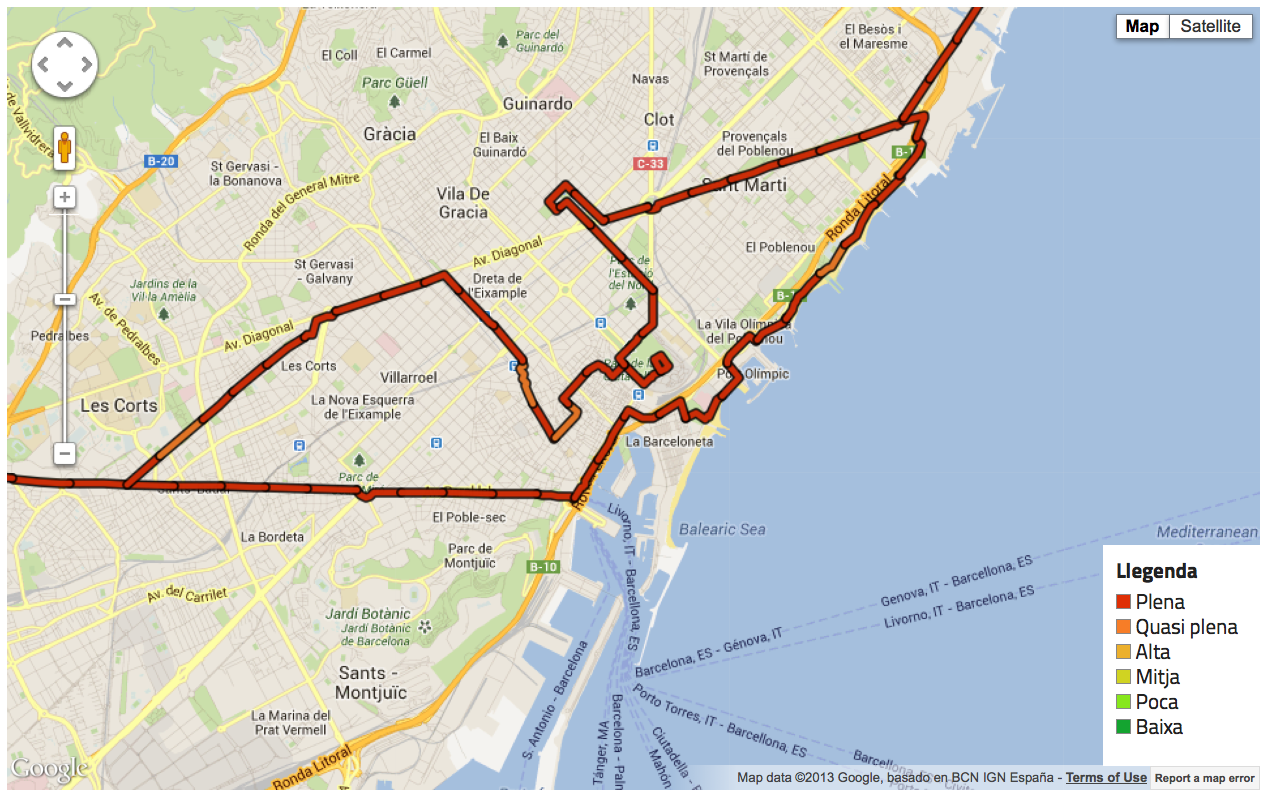September 11th is National Catalonia Day
Every year on the 11th of September the entire region of Catalonia celebrates their national holiday. It is often referred to as Independence Day but the actual origin of the holiday has nothing to do with the independence of Catalonia – Catalonia is still governed by Spain. It is actually a celebration of the defeat of the Catalan troops by the army of the Bourbon king Philip V of Spain on September 11 1714, at the Siege of Barcelona. The holiday was first celebrated in the year 1886, was suppressed by the Franco ruled Spanish State in 1939 and then finally reinstated by the Government of Catalonia in 1980.
The “Acte Central” or main event of the Diada Nacional de Catalunya is an invitation only ceremony at the Plaza de la Cascada in front of the fountain in the Park de la Cituadella. It starts at 11:30 and include readings and performances of traditional Catalan music and dance.
Free Concerts during the Diada Nacional de Catalunya
There will be free concerts held at Plaza Catalunya and at the Festa per la Libertat at the Arc de Triumf. If you are staying at one of our Sant Jordi Hostels in Barcelona, just ask your friendly neighborhood receptionist for information on where to go and what to do.
The Catalan Way to Independence – La Via Catalana Hacia la Independencia
Taking place this year during the 2013 Diada Nacional de Catalunya is the Via Catalan. The plan is to make a 400 kilometer human chain (all Catalans standing hand-in-hand) that stretches from the North to the South of the region of Catalonia. The act is a symbol of solidarity and a display of support for the hope for the future independence of Catalonia from Spain.
The Via Catalana is organized by ta pro-independence group and will stretch through several iconic Catalan locations including the Sagrada Familia, Camp Nou, and Passeig de Gracia. It will also pass through other major cities in Catalonia like Taragona and Girona.
The Via Catalana, chain for change, is a peaceful civil protest organized by the Catalan National Assembly (ANC) and was inspired by the ‘Baltic Way’ of the 23rd of August 1989 that saw 2 million people form a 670 km long human chain that crossed Estoni, Latvia, and Lithuania to show support for the independence of the region from the Soviet Union.
La Via Catalana Barcelona Route Guide
Route 1 (center chain, from North to South)
Eduard Maristany – pl. Llevant –- av. Diagonal – Pl. de les Glòries – av. Diagonal – Lepant – Provença – Sardenya – Mallorca – Marina – av. Meridiana – pg. Pujades – Parc de la Ciutadella (pg. Til·lers, pl. Joan de Fiveller, monument a Prim, porta de l’av. Marquès de l’Argentera) – pg. Picasso – Princesa – Allada-Vermell – Montanyans – Pou de la Figuera – Gombau – av. Francesc Cambó – av. Catedral – Bisbe – pl. Sant Jaume – Ferran – La Rambla – pl. Catalunya – pg. de Gràcia – Pl. Joan Carles I – Av. Diagonal – Pl. Francesc Macià – Av. Diagonal – Loreto – pl. Doctor Ignasi Barraquer – Trav. de les Corts – Collblanc.
Route 2 (coastal chain, from North to South):
Eduard Maristany – Parc del Fòrum – pg. Marítim de la Nova Mar Bella – pg. Marítim de la Mar Bella – pg. Marítim del Bogatell – pg. Marítim de la Nova Icària – Parc del Port Olímpic – Marina – pg. Marítim de la Barceloneta – Parc de la Barceloneta – pg. Salvat Papasseit – Doctor Aiguader – Carbonell (pont) – Doctor Aiguader – pl. Pau Vila – Pla de Palau – pg. Isabel II – pg. Colom – pl. Portal de la Pau – pg. Josep Carner – pl. Drassanes – av. Paral·lel – pl. Espanya – Creu Coberta – Sants – Collblanc.









